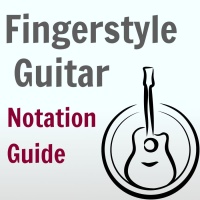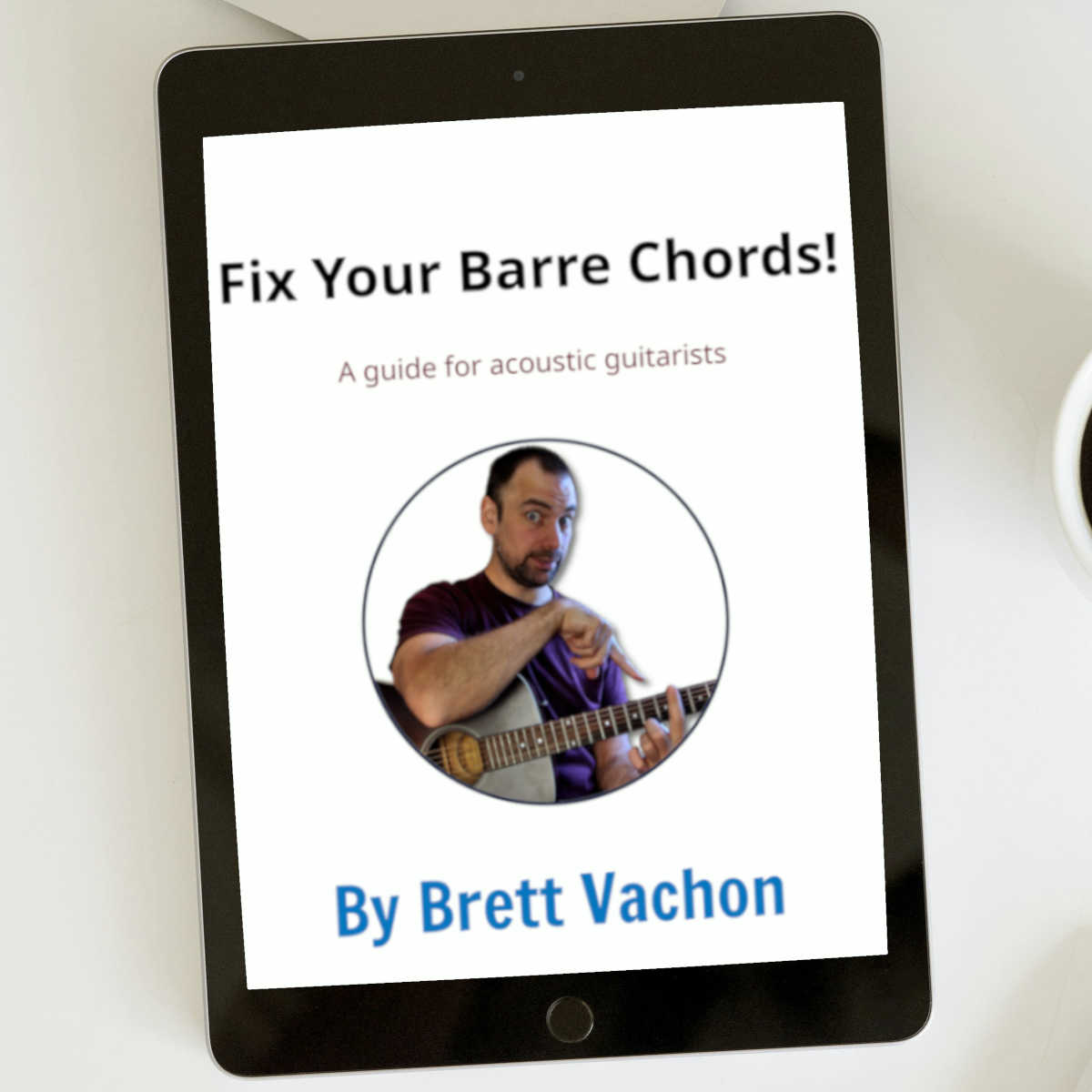If you are learning to play fingerstyle guitar but have no idea how to practice, here's how to create and structure your routine.
I'm sitting in my practice room with a hot cup of astragalus tea and the familiar hum of the humidifier behind me. The guitar rests under my fingertips, ready to be brought alive with every pluck of the string.
Stop!
Before we get into blindly picking the strings with finesse, let's talk about the most crucial element – you.
A well-structured practice routine is the backbone of progress, and for that, you need a plan.
Your practice environment is more than just a room—it's your sanctuary, your laboratory of musical exploration. Whether it's a cozy corner in your bedroom or a dedicated studio bathed in warm light, this space sets the stage for your daily ritual.
But let's not forget the glue that binds it all together—organization.
We are going to break down an effective practice routine into four easy to follow steps.
What Makes For Productive Guitar Practice ?
In order to have an effective practice routine, you will need a place to practice where you can concentrate, a schedule, and a clear plan on how to progress.
Guitar practice is not about how well we play when we feel inspired, but how consistently we practice even when we don't feel like it. The greatest guitar players didn't become great by only playing when they felt like it. They got there by practicing regularly, every day.
Progress in guitar playing doesn't happen in big jumps. It happens slowly and steadily, through regular practice.
A practice schedule is more than just a list of things to do. It's a promise to yourself, a commitment to your guitar playing. Even when you feel distracted or unsure, your schedule helps you stay accountable and keeps you going, no matter how you feel.
How To Create a Good Practice Environment
In your practice environment, every little detail is important. From how your music tablature is arranged to not having food around, each detail helps create a space that is good for learning.
Your practice environment should feel special, with everything set up to help you focus on your guitar playing. You should have everything you need within reach, like your sheet music, guitar tablature and a pencil for making notes. Some people prefer to use an iPad or another tablet, which integrates both the note taking and the sheet music.
Try to avoid distractions. Your practice environment should be a place where you can focus. This means no food, as it can distract you from your practice. However, you should have water to stay hydrated.
What about your smartphone, which can often be distracting? In your practice environment, it should only be used for helpful things like tuning your guitar or keeping time with a metronome. This way, your smartphone can help you improve your guitar playing instead of distracting you.
How To Structure A Practice Routine
A fingerstyle guitar practice routine consists of three steps: a warm up, a main practice session, and journaling at the end.
You can play scales as a warm-up, or some easy songs that I provide in the course Play Fingerstyle Guitar Now!
After your warm up, before going into the main practice session, you must answer the following questions.
- What Am I Going To Work On?
- Why Am I Working On This?
- How Am I Going To Practice This?
- How Long Will I Spend On This?
Let's break each of those down right now.
What Am I Going To Work On?
Choose what to work on. This can be sight reading, a song you are learning, a slur scale that you want to play faster, etc.
Analyze the difficulties posed by that particular passage and decide how you are going to overcome them. If in doubt, just play it really slowly until you can speed it up.
If you still can't nail what you were working on, you may have a problem with your fingerstyle guitar technique.
Why Am I Working On This?
Clearly, you're investing time and effort into your guitar practice routine to hone your skills, express your creativity, and fulfill your musical aspirations
But this question is geared towards avoiding blind practice. To avoid blind practice is to steer clear of merely going through the motions without purpose or direction.
By engaging with your practice sessions intentionally, with clear objectives and focused attention, and understanding the specific skills you aim to improve, you ensure that every minute spent practicing contributes meaningfully to your development as a guitarist.
How Am I Going To Practice This?
The answer isn't just playing it over and over, but making a plan to tackle each challenge with purpose. Don't make the mistake of trying to learn a huge piece all at once.
First, you need to break down the piece like a puzzle, finding the hard parts that make it complex. By focusing on these tricky sections, you can figure them out one note at a time.
But it's not enough to just find the hard parts - you also need to understand why they're difficult. Maybe it's quick chord changes, complicated fingerpicking patterns, or big stretches on the guitar.
Amidst all these challenges, keeping the rhythm is most important. To feel the beat of the piece is to make its melodies come alive, allowing them to flow smoothly from your fingers. You can do this by tapping out rhythms before you play, and playing along with a metronome.
How Long Will I Spend On This?
Time, which can be hard to manage, is the key to improving and mastering your skills. Setting deadlines is not just necessary, but helpful.
With each new piece of music, create a timeline with goals based on what you hope to achieve by a certain date will lead you towards becoming better. These deadlines are not restrictions, but guides that help you practice efficiently and effectively.
However, you must manage your time carefully. As you decide how many minutes to spend on each part of your practice routine, balance is important. How much time should you spend on improving your technique and learning new fingerpicking patterns?
But remember, you also need to be flexible. Time can be adjusted based on your progress and inspiration.
As time goes on, you need to decide what to practice based on upcoming performances or deadlines. By planning your practice time wisely, you make sure every minute counts, bringing you closer to playing the piece perfectly.



